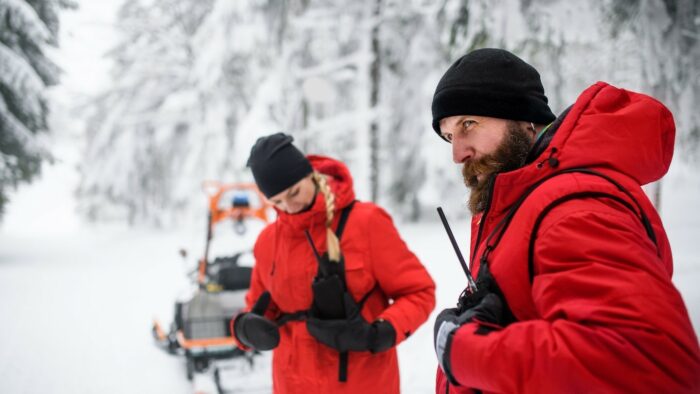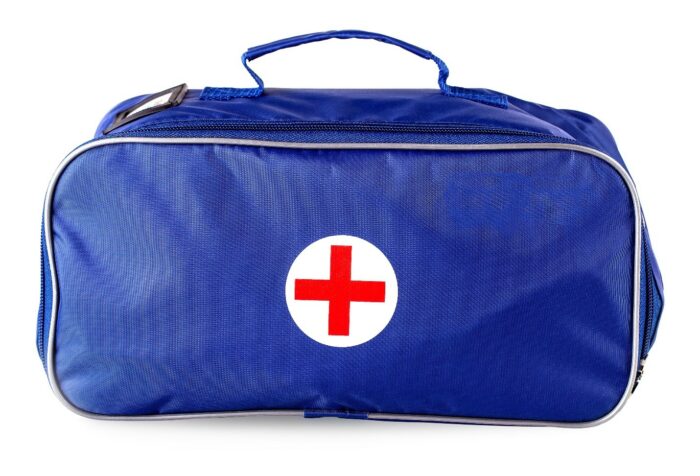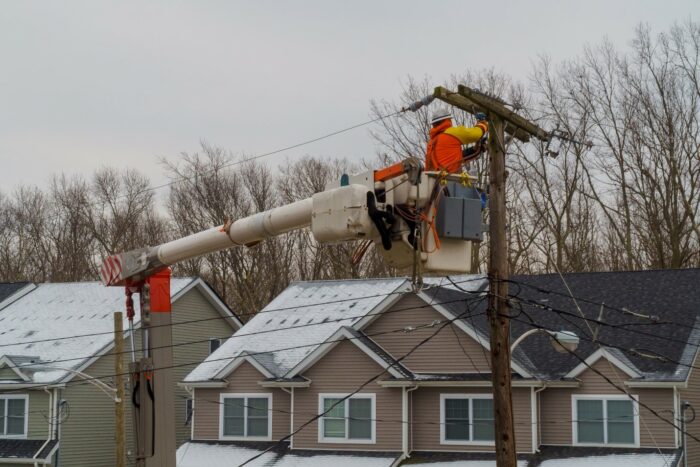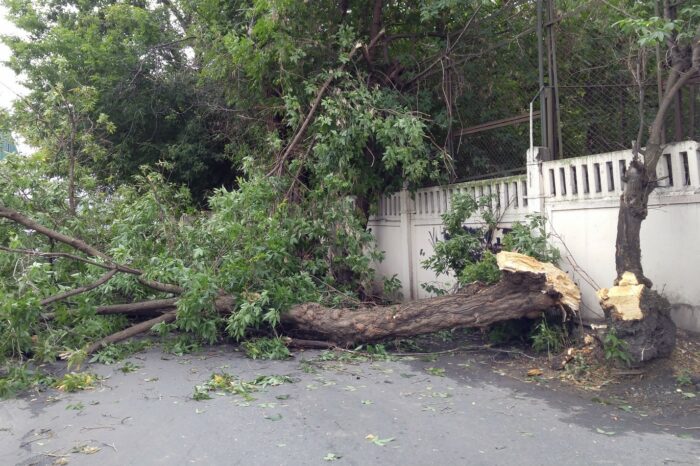
Storms can cause serious damage to your property. High winds send debris flying at dangerous speeds—wreaking havoc on your home and putting you and your loved ones at risk of injury. While you can’t control a storm, there are measures you can take to be safer when severe weather strikes.
Emergency preparedness is the best way to minimize potential damage if you have advance notice of a looming storm. It also increases your recovery and comfort levels in the aftermath.
Here are some items to tick off your checklist before a storm hits:
1. Stay on top of Emergency Alerts

First things first: stay informed. Getting up-to-the-minute weather updates and advisories is a crucial part of preparing your family for an incoming storm.
Subscribe or tune in to reliable emergency information providers such as FEMA (mobile app and text messages), Red Cross, or NOAA. And when you receive an emergency alert, take the warnings seriously.
2. Have an Action Plan
Any emergency alerts that a storm may be brewing? If so, start preparing—even if all you can currently see is a clear blue sky.
“There is no harm in hoping for the best as long as you are prepared for the worst.”
Take some time to put together a comprehensive action plan for when the storm hits to minimize property damage and injuries. This is best done as a family exercise to ensure everyone is on board and well-versed with the steps to take when the worst happens.
Some things to go over in your storm emergency preparedness plan include:
- Lay down the recommended survival plans depending on the impending weather emergency. Each crisis demands a somewhat different preparedness plan and supplies.
- Identify at least two safety locations to take cover in the event of a weather emergency.
- Write down essential phone numbers and store them safely in a readily accessible spot. Also, have an out-of-town person as an emergency contact.
- Have a plan for your pets; they, too, are part of your family. Consider finding emergency shelters that accommodate pets and have a way to track your animal companions if they get lost.
3. Teach Your Kids Storm Emergency Preparedness

A storm is scary for everyone, but it can have devastating effects on the little ones. Helping your kids understand the different weather emergencies and what to expect from each of them can help reduce their distress.
Go over your storm emergency preparedness plan and teach them how to stay safe. For good measure, consider practicing your emergency plan to help your kids better understand what they need to do. This may also help them maintain a sense of calm amid mother nature’s chaos.
4. Pack a “Go Bag”

Always have an emergency kit prepared and ready to go. Your “go bag” should carry all the necessary resources you and your family need to stay safe and relatively comfortable during a disaster.
But with limited storage space and a lot of uncertainties ahead, it’s essential to carefully pick what goes into the emergency kit—all while keeping the needs of all family members in mind.
According to the American Red Cross, some basic supplies include:
- Water – 1 gallon per person, per day
- Food – gov covers emergency food supplies in more detail.
- Hand-crank or battery-powered radio (with extra batteries) for emergency updates.
- A first aid kit, prescription medication, and medical items.
- Sanitation and hygiene supplies
- Sleeping bags or emergency blankets
- Extra cash
- Fully-charged cellphone and chargers
- A multi-purpose tool

And to be on the safer side, have a car emergency kit for when you run into trouble on the road or when you need to evacuate from a disaster area on short notice. In addition to the supplies discussed above, your emergency car kit should contain:
- A gas can
- A towline
- Jumper cables
- Road maps
5. Prepare for a Power Outage

There’s no denying that electricity is a crucial part of our lives today—from communication, food preservation, to getting through extreme temperatures. And with the force of mother nature bearing down on power lines during a storm, there’s always the risk of a blackout.
With severe weather on the horizon, ensure you’re prepared for a power failure with the following precautionary measures:
- Install a backup generator
- Have a battery-powered radio, flashlights, and extra batteries on standby.
- Switch your refrigerator to the coldest settings and group food together to keep it cold for longer. Also, consider stocking your freezer with ice.
- Have a fully charged cellphone(s)
- Double-check your smoke and carbon monoxide detectors and update their batteries.
- During a power failure, unplug electrical appliances in case of a power surge when you’re reconnected
6. Brace Your Home for the Impending Storm

Strong winds, extreme temperatures, and humidity can take a significant toll on your home. If you live in an area susceptible to snowstorms, hurricanes, and other types of extreme weather, it’s best to batten down the hatches as you prepare for those conditions.
- Install storm-tough fixtures. Components such as storm windows reinforce your home—helping it take more ‘punches’ from the howling winds.
- Board up glass doors and windows with plywood or shutters to help mitigate the risk of injury from broken glass.
- Secure anything that can be picked up by the wind. This includes patio furniture, grills, garbage cans, tools, and any other wind-borne object around your property.
- Prune risky tree branches and cut down weakened trees that could break off under the pressure of high winds, especially those near the house or above walking paths.
- Consider building a safe room in your home.
7. Create a Home Inventory
Have an inventory of items in your home before the storm hits and keep it off-site in a safe location. This comes in handy for insurance claims in case of damage to your property. It saves you from the hassle of trying to create one in the aftermath of a storm.
It’s also important to gather/organize your important papers and store them in a secure off-site location. This may include your passports, birth certificates, insurance policies, and mortgage documents.
Stay Safe!
You may not have the power to stop storms, but you can defend yourself from any weather emergency by being prepared. Disaster preparedness comes in many forms—from reinforcing your house to packing an emergency kit.
The tips above can help you get ready for most situations. You should also consider learning the best practices for safely dealing with the aftermath of a snowstorm or hurricane.





